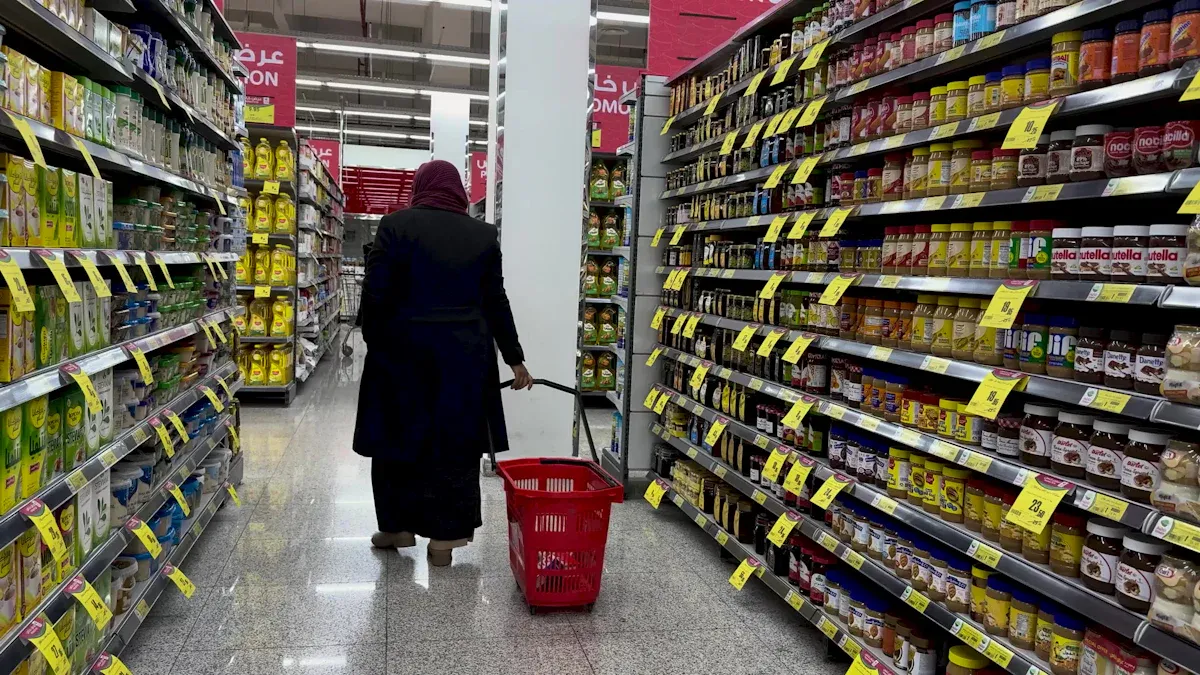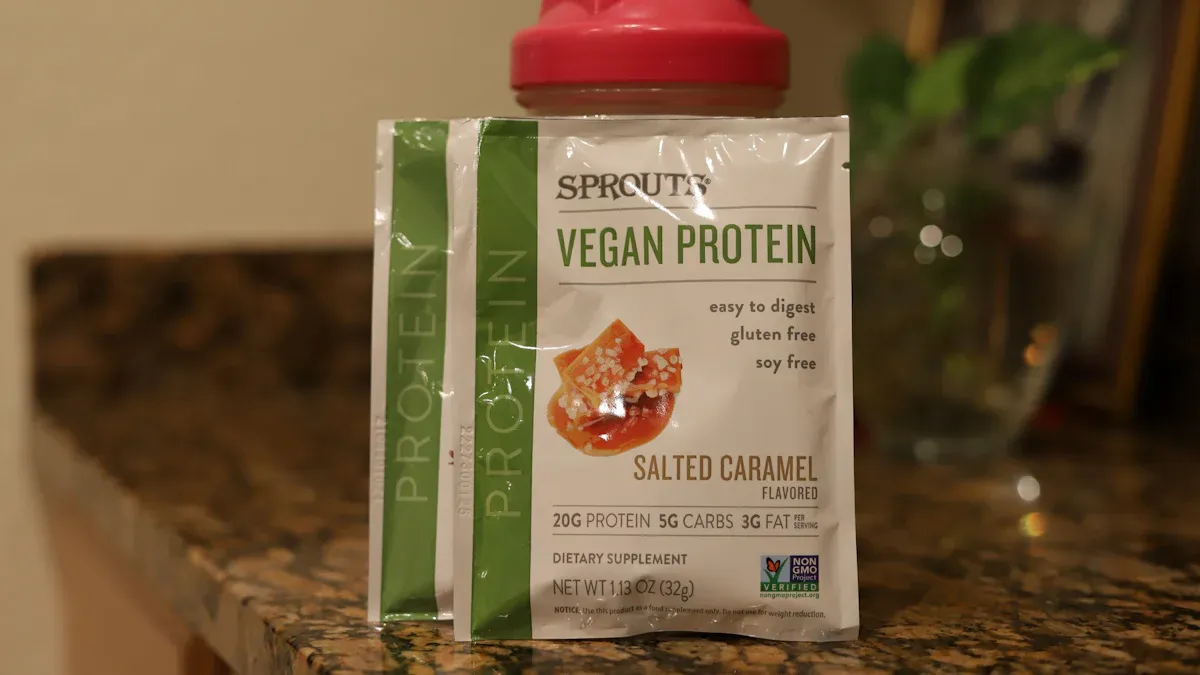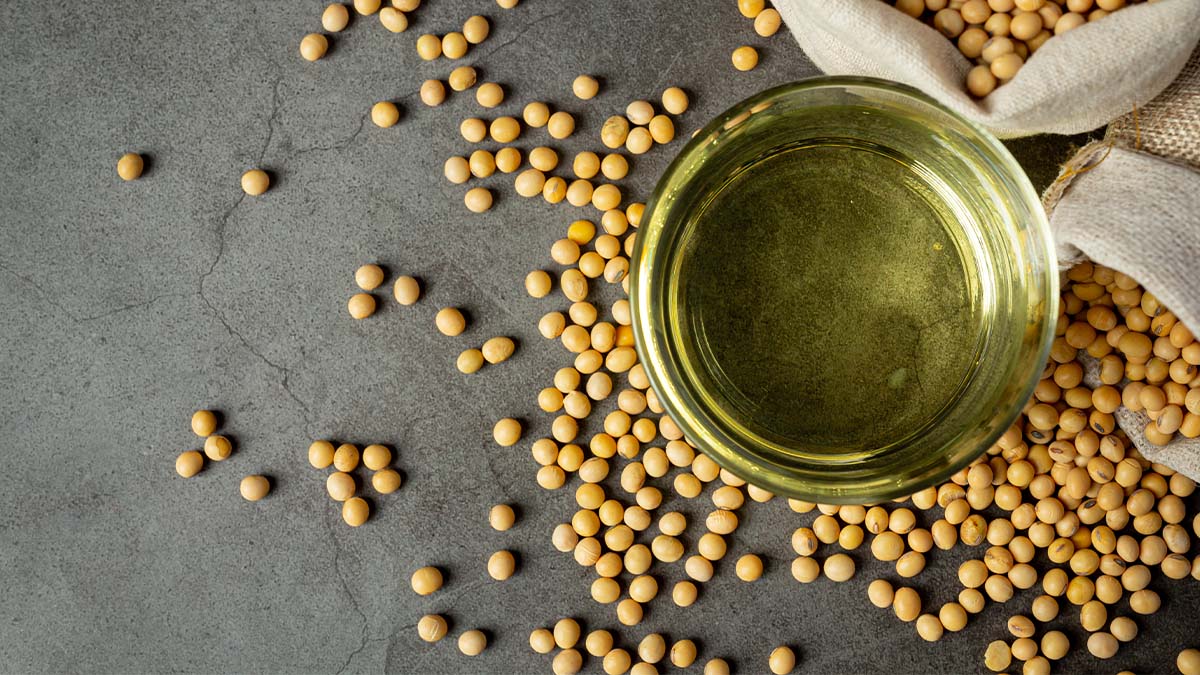If you want to meet the biggest market needs and rules, conventional soy protein isolate is still the top choice. You can see this in the numbers:
The world market for conventional soy protein has a 72.4% share in 2024.
Non-GMO soy protein isolate is growing quickly. It is worth USD 1.2 billion in 2024. It is expected to grow by 8.5% each year until 2033.
Knowing these trends helps you make good choices for buying and following rules.
Key Takeaways
Non-GMO soy protein isolate is growing fast. It may reach USD 4.8 billion by 2033. Health-conscious people are buying it more.
Conventional soy protein isolate costs less. It is easy to find. Many food products use it because it is popular.
Certification matters a lot for non-GMO products. This is very important in places like Europe and Japan. Certification helps people trust the product.
Health trends show more buyers want clean-label products. Non-GMO choices are good for brands that want to be open.
Knowing what each region wants helps businesses. They can pick the right soy protein isolate for local needs.
Overview
Non-GMO Soy Protein Isolate
More food companies now pick non-gmo soy protein isolate. This kind comes from soybeans that are not changed by science. Farmers follow strict rules to grow these soybeans. This protein fits clean-label needs. Many people want food that seems safe and natural. You can find non-gmo soy protein isolate in protein powders. It is also in nutrition bars and dairy alternatives.
Tip: If you want to sell in Europe or Japan, non-gmo soy protein isolate helps you follow their rules.
Here are some things you should know:
Made from soybeans that do not use genetic engineering.
Often has labels like “Non-GMO Project Verified.”
Health-focused buyers like this product.
Good for brands that want to be open about ingredients.
Check the table below for a quick look:
Feature | Non-GMO Soy Protein Isolate |
|---|---|
Source | Non-GMO soybeans |
Labeling | Non-GMO Verified |
Main Markets | EU, Japan, USA |
Consumer Appeal | High |
Conventional Soy Protein Isolate
Conventional soy protein isolate is in many foods worldwide. This type uses soybeans that might be genetically changed. Farmers use modern ways to grow these soybeans. This protein costs less and is easy to get. Many companies use it because it works in lots of recipes.
Here are some things to think about:
Comes from soybeans that might use genetic modification.
Usually does not have special labels.
Works in most food products.
Costs less for people who buy a lot.
Note: If you want to reach more markets, conventional soy protein isolate gives you more choices.
You see this type in baked goods and meat alternatives. It is also in sports nutrition products. Pick this if you want to save money and have a steady supply.
Market Demand

Global Trends
The market for soy protein isolate is changing a lot. More people want plant-based proteins now. This helps non-gmo soy protein isolate grow quickly. Food companies use it in many foods. The market for non-gmo soy protein isolate is worth USD 1.2 billion in 2024. Experts think it will grow by 8.5% every year until 2033.
Here is a table that shows the newest global trends:
Trend Description | Implication |
|---|---|
Rising Consumer Demand for Plant-Based Proteins | More people want non-gmo, sustainable protein sources. Health-conscious buyers and vegetarians or vegans lead this trend. |
Growing Popularity of Meat Alternatives | Companies making meat alternatives use more non-gmo soy protein isolate. Health and environmental worries push this trend. |
Increased Demand from the Food and Beverage Sector | Many food and drink products now have non-gmo soy protein isolate. This helps it become more popular. |
Expansion of the Dietary Supplement Market | Athletes and health-focused buyers pick protein powders and supplements with non-gmo soy protein isolate. |
Technological Advancements | New technology helps soy protein isolates work in more foods and drinks. |
Sustainability Concerns | People want products that are better for the planet. Non-gmo choices get more attention. |
Stringent Regulatory Landscape | Governments make rules for food safety. Certified non-gmo products earn more trust and demand. |
Consumer Preferences
Health worries change what people buy. Many buyers are concerned about GMOs. They want products that seem safer and more natural. Here are the main reasons people pick non-gmo soy protein isolate:
More people know about health risks of GMOs
More interest in organic and non-GMO products
People want organic certifications, especially in rich countries
Tip: To get health-focused buyers, use clear non-GMO and organic labels.
Clean-label trends also affect what people want. Buyers want to know where their food comes from. They look for simple ingredients and clear labels. The clean-label trend makes more people choose non-gmo soy protein isolate. This protein matches their need for honesty and healthy choices. You can use this to build trust with your customers.
Regional Insights
Demand for non-gmo soy protein isolate is strong in some places. Europe and Japan have strict rules about GMOs. You must use non-gmo soy protein isolate to sell there. In the United States, more buyers want non-GMO and organic products. In developing countries, conventional soy protein isolate is still more popular because it costs less.
Each region has its own rules and buyer habits. If you want your business to grow, you should learn about these trends. You can pick the best soy protein isolate for each market.
Certification

Non-GMO Certification
You must follow many rules to get non-GMO certification for soy protein isolate. Certifiers check every step in your supply chain. They look at how farmers grow soybeans. They also check how you process and store the protein. You have to keep non-GMO soybeans away from GMO soybeans all the time.
Most certifiers use outside audits. These audits make sure you follow all non-GMO rules. You need to show records for each batch. Traceability is very important for this. If you want to sell in Europe or Japan, you must have this certification.
Here are the main steps for non-GMO certification:
Pick non-GMO seeds and work with trusted farmers.
Keep non-GMO soybeans apart during transport and storage.
Use outside labs to test for GMOs.
Keep clear records for each step.
Pass regular audits from certifiers.
Note: 85% of buyers and partners want outside checks and traceability before they trust your product.
You often see labels like “Non-GMO Project Verified” on these products. These labels help you build trust with customers. They also help you follow strict rules in many countries.
Conventional Certification
Conventional soy protein isolate does not need as many checks. You do not have to prove your soybeans are non-GMO. Most of the time, you only need to follow basic food safety rules. You may need to show your product is safe and clean. You do not need special labels for GMOs in many countries.
Here is a table to compare the two types:
Feature | Non-GMO Soy Protein Isolate | Conventional Soy Protein Isolate |
|---|---|---|
Certification Needed | Yes (Non-GMO, third-party) | Basic food safety |
Traceability | Required | Not required |
Labeling | Non-GMO Verified | Standard labeling |
Audit Frequency | Regular | Occasional |
Market Trust | High | Moderate |
Tip: If you want to sell in places with strict rules, non-GMO certification gives you a big advantage.
Market Access
Certification helps your business grow. When you have non-GMO certification, you can sell in more countries. Many buyers want proof your product is safe and traceable. This is true in the organic food industry and in places with strict GMO labeling laws.
You can see how certification helps market access:
Most buyers want outside checks and clear records.
Certified products build more trust with customers.
You can sell to companies that want ethical and clear sourcing.
Certification helps you follow rules in Europe, Japan, and other strict markets.
Callout: Producers now offer certified ingredients as value-added options in protein-fortified foods. This matches what customers want—transparency and ethical sourcing.
If you want your business to grow, focus on certification. It helps you reach more buyers and meet their needs. Non-gmo soy protein isolate with the right certification gives you a strong spot in the global market.
Choosing Soy Protein Isolate
Cost Factors
When you choose between non-GMO and conventional soy protein isolate, cost plays a big role. Conventional soy protein isolate usually costs less. You can buy it in large amounts, and it is easy to find. This makes it a good choice if you want to keep your prices low or need a steady supply for big production runs.
Non-GMO soy protein isolate often costs more. Farmers must follow strict rules, and you need extra steps for certification and traceability. These steps add to the price. If your customers care about clean labels or health, they may pay more for non-GMO products. You should weigh the higher cost against the chance to charge more for premium products.
Tip: Plan your supply chain early. Work with trusted suppliers to avoid shortages and control costs.
Branding
Your choice of soy protein isolate can shape your brand. Non-GMO certification is now a smart way to stand out. You can show customers that you care about their health and the planet. Many people look for non-GMO labels and trust brands that offer them. This can help you build loyalty and attract buyers who want quality and sustainability.
The plant-based food industry is growing fast. You can use new methods like fermentation and clean-label processing to make your products even better. Try using blockchain for traceability. This shows your customers that you are honest and careful. You can also run marketing campaigns that highlight health and eco-friendly benefits. Meeting FDA and USDA rules gives you an edge in the market.
Export
Exporting soy protein isolate gives you many options. Non-GMO soy protein isolate is gaining ground as more buyers want organic and natural foods. You can reach new markets if you offer certified non-GMO products. Still, conventional soy protein isolate holds most of the market because it costs less and is easy to get.
Non-GMO soy protein isolate is popular with health-focused buyers.
Conventional soy protein isolate leads in global sales due to price and supply.
The organic segment, including non-GMO, is growing as people want sustainable choices.
You may face challenges with non-GMO exports, but demand is rising.
Note: Study your target markets. Choose the soy protein isolate that matches local rules and buyer needs.
Non-GMO Soy Protein Isolate in the Market
Applications
You can find non-gmo soy protein isolate in many foods. Food makers use it to improve texture and boost protein. You see it in meat and meat products. Bakers add it to bread and cakes for better texture. It works well in flour tortillas, desserts, and pasta. Breakfast cereals often contain textured soy protein and concentrate. Beverage companies use soy fibers in drinks and cereal-based products. The bakery industry also uses soy lecithin.
Here is a list of common uses:
Meat and meat alternatives
Bakery items like bread and cakes
Flour tortillas and pasta
Desserts
Breakfast cereals
Beverages and cereal-based drinks
Non-gmo soy protein isolate often comes from organic soybeans. These beans have more nutrients than conventional or GMO soybeans. Studies show organic soybeans have more protein and fewer omega-6 fatty acids. You get a product that supports health and clean-label needs.
Tip: If you want to make foods with simple ingredients, non-gmo soy protein isolate helps you meet clean-label goals.
Future Outlook
You will see strong growth for non-gmo soy protein isolate in the next few years. Experts expect the market to grow at 8.3% each year from 2026 to 2033. The market size could reach USD 4.8 billion by 2033. More people want plant-based and clean-label foods. Health and sustainability drive this demand.
Here are some trends to watch:
Rising demand for plant-based proteins
More buyers looking for clean-label products
Growth in health and wellness foods
Regulations may change in the future. Some areas do not have clear rules for non-GMO products. New rules could make it easier or harder for you to enter the market. You should watch for changes and plan for them. Addressing regulatory challenges will help you grow your business.
Note: Staying updated on food laws and market trends helps you succeed with non-gmo soy protein isolate.
Pick soy protein isolate that fits your market and certification needs. Non-GMO choices are growing quickly in places with strict rules and health-focused buyers. Conventional soy protein isolate sells the most worldwide because it costs less and is easy to get. To do well, you should:
Get soy protein isolate from different sources to make your supply chain strong
Spend money on outside certifications and care about sustainability
Pay attention to what buyers want in clean-label and plant-based products
Keep watching for new rules and changes in what buyers like. This helps your business stay strong and ready for new chances.
FAQ
What is the main difference between non-GMO and conventional soy protein isolate?
Non-GMO soy protein isolate uses soybeans that are not changed by science. Conventional soy protein isolate might use soybeans that are changed. You can look at the label to see if it says “Non-GMO” or “GMO.” This helps you know which kind you have.
Why do some markets require non-GMO certification?
Some places, like the EU and Japan, have strict rules about GMOs. You need non-GMO certification to sell there. This shows buyers your soy protein isolate is safe and follows their rules.
Is non-GMO soy protein isolate healthier than conventional?
Non-GMO soy protein isolate is in foods that focus on health and clean labels. Both types give you about the same nutrition. Some people pick non-GMO to feel safer or avoid GMOs. Science says both types are safe to eat.
How can you source reliable non-GMO soy protein isolate?
Tip: Work with suppliers you trust who have third-party certification and clear records. Ask for lab tests often and keep records for each batch. This helps you meet buyer needs and follow the rules.

